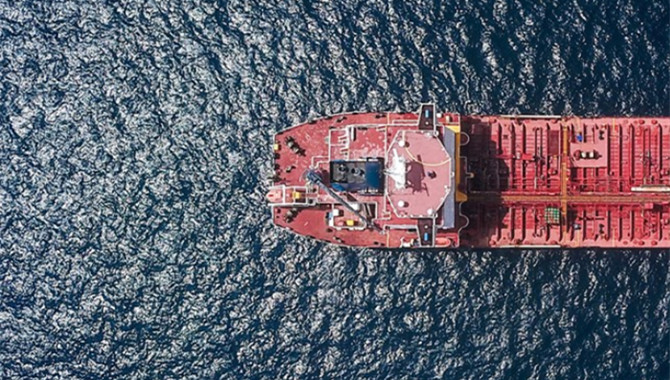The Russia-Ukraine war may have come as a shot in the arm for overall global decarbonization efforts, but the maritime industry is still far behind in that value chain to draw those resources, with significant progress required and favorable incentives needed to expedite shipping’s decarbonization journey as it embraces a multifuel future, industry experts said.
“I think it’s sad. Whilst the world agreed that we had an existential threat and the need to decarbonize, we had to wait for a country to invade anther country to make us realize that we have to do something faster,” Sanjay Kuttan, Chief Technology Officer at the Singapore-headquartered Global Center for Maritime Decarbonization, or GCMD, said June 16 at the S&P Global Commodity Insights Bunker and Shipping Summit, 2022.
“We [globally] need to accelerate our efforts…So, I hope that even when the war ends, the pace of acceleration doesn’t taper off because the existential threat affects not only one nation but the whole world,” he said.
Sanjay Verma, business development director at Warstila, also echoed a similar sentiment. However, he noted that it was imperative to take a holistic view.
“We are far behind in that value chain for shipping to get that fuel [renewables] and truly it should be done again following the same logic of cleaning the world, not the ship,” Verma said.
Embracing a multifuel future
When it comes to cleaner marine fuels, LNG, perhaps methanol, are the only alternatives that are viable today, Takeo Akamatsu, General Manager of Green Innovation Business Unit Plant Project, Marine & Aerospace Division at Itochu Corporation said.
“We believe ammonia will come soon and some years later we may have the option of green LNG, green methanol and green ammonia,” Akamatsu said.
In April, Itochu Corporation said it had launched the Joint Study Framework for Ammonia Bunkering Safety, a framework for sharing issues and knowledge on safety and guidelines for ammonia bunkering with the aim of social implementation of ammonia use as a marine fuel, together with 16 companies and organizations.
“We are now focused on Singapore for our pilot [project] and are working with partners to set up [a] bunkering station in Singapore…[separately] our target is to deliver the first vessel with ammonia-fueled engine in the first quarter of 2026,” Akamatsu said.
But Itochu is not the only one exploring ammonia’s potential as a marine fuel.
In January, the GCMD awarded its ammonia bunkering safety study to a DNV-led consortium.
“It actually started off because we wanted to demonstrate that ammonia bunkering can be done safely as a physical activity,” Kuttan said.
“So, we need to get a policy sandbox from the regulators in Singapore that allows us to execute that and hopefully we can get the project on water in early 2024,” he added.
Meanwhile Kuttan noted that when one looked at the infrastructure to be delivered, biofuels were perhaps the “closest fuel that can be deployed today.”
There are some inherent challenges in terms of testing methodologies to ensure the right quality and quantity for blending but that by far is the easiest fuel, he said. Scaling it, however, is an issue presently and the old argument about competition with the food chain remains, he said.
“All Wartsila engines can run on biofuels but if I look at shipping and the need of shipping — the volume and the areas where it requires fuel — for me LNG is the only option at the moment,” Verma said.
“This agenda of climate change is not to make shipping look good, it’s to reduce the carbon footprint of the planet and you are not doing any justice [to this] by using methanol today [in] the way it is…. So why not use LNG and why use methanol on the ship?” he said.
Carbon tax mechanism
When it came to carbon offsets and carbon credits, Kuttan noted that there was no clear cut consensus in the industry on their effectiveness to achieve decarbonization.
“When you look around the rules around the carbon credits which are additionality and the rules around sustainability of those offsets, especially considering upcoming regulations around CII, EEXI or EEDI in the past, one wonders whether the rules of additionality can be actually addressed from maritime carbon offsets,” he said.
“So, it’s not a very straightforward application and we need to think through how to justify the carbon offset in line with the global regulatory requirements,” he added.
Compared to carbon offsets, a carbon tax is something which is “more doable”, Verma said. It would directly incentivize owners who are investing in their fleet as well as create a level playing field, he said.
Akamatsu agreed that using conventional fuel and then offsetting it was not the “proper direction” to take. There was a need for other mechanisms, he said.
Meanwhile, another industry source opined that while carbon offsets could help in the short-term. “I don’t think this mechanism will achieve the goals that a carbon tax will,” he said, adding that the practice of carbon offsets could potentially get abused.
Source: Platts
The opinions expressed herein are the author's and not necessarily those of The Xinde Marine News.
Please Contact Us at:
media@xindemarine.com


 Ningbo Containerized Freight Index Weekly Commentar
Ningbo Containerized Freight Index Weekly Commentar  Ningbo Containerized Freight Index Weekly Commentar
Ningbo Containerized Freight Index Weekly Commentar  Ningbo Containerized Freight Index Weekly Commentar
Ningbo Containerized Freight Index Weekly Commentar  BIMCO Shipping Number of the Week: Bulker newbuildi
BIMCO Shipping Number of the Week: Bulker newbuildi  Ningbo Containerized Freight Index Weekly Commentar
Ningbo Containerized Freight Index Weekly Commentar  Ningbo Containerized Freight Index Weekly Commentar
Ningbo Containerized Freight Index Weekly Commentar